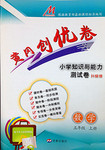
| |||||||||||||||||||||||||||||||||||||||||||||
(1) |
文章第一段指出:斯蒂芬森從十四歲起做父親的助手,并且把所有的空閑時(shí)間都花在研究火車引擎上面,由此可見(jiàn),他的興趣是從跟隨父親工作開(kāi)始的,故選D項(xiàng)。 |
(3) |
文章最后一段指出:斯蒂芬森在兒子羅伯特的幫助下設(shè)計(jì)了Rocket,并且成為世界著各的鐵路工程師,由此推出D項(xiàng)為正確選項(xiàng)。 |
|
推論題。第二段提到:1804年,理查德·特里維西克制造了火車頭,第三段又講到:1825年,火車運(yùn)送了第一批貨物和乘客,通過(guò)推算,可知二者之間間隔是21年。故C項(xiàng)為正確答案。 |


 黃岡創(chuàng)優(yōu)卷系列答案
黃岡創(chuàng)優(yōu)卷系列答案
| 年級(jí) | 高中課程 | 年級(jí) | 初中課程 |
| 高一 | 高一免費(fèi)課程推薦! | 初一 | 初一免費(fèi)課程推薦! |
| 高二 | 高二免費(fèi)課程推薦! | 初二 | 初二免費(fèi)課程推薦! |
| 高三 | 高三免費(fèi)課程推薦! | 初三 | 初三免費(fèi)課程推薦! |
科目:高中英語(yǔ) 來(lái)源:必修二設(shè)計(jì)英語(yǔ)譯林 譯林版 題型:050
| |||||||||||||||||||||||||||||||||||||||||||||||||||||||||||
查看答案和解析>>
科目:高中英語(yǔ) 來(lái)源:2006年普通高等學(xué)校招生全國(guó)統(tǒng)一考試 英語(yǔ) 題型:050
| |||||||||||||||||||||||||||||||||||||||||||||||||||||||||||
查看答案和解析>>
科目:高中英語(yǔ) 來(lái)源:2006年普通高等學(xué)校招生全國(guó)統(tǒng)一考試、英語(yǔ)(全國(guó)2) 題型:050
| |||||||||||||||||||||||||||||||||||||||||||||||||||||||||||
查看答案和解析>>
百度致信 - 練習(xí)冊(cè)列表 - 試題列表
湖北省互聯(lián)網(wǎng)違法和不良信息舉報(bào)平臺(tái) | 網(wǎng)上有害信息舉報(bào)專區(qū) | 電信詐騙舉報(bào)專區(qū) | 涉歷史虛無(wú)主義有害信息舉報(bào)專區(qū) | 涉企侵權(quán)舉報(bào)專區(qū)
違法和不良信息舉報(bào)電話:027-86699610 舉報(bào)郵箱:58377363@163.com